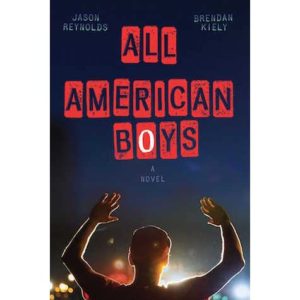 A really good book makes you look at the world in ways you might not have before. That’s why I’m a fan of “All American Boys” by Jason Reynolds and Brendan Kiely.
A really good book makes you look at the world in ways you might not have before. That’s why I’m a fan of “All American Boys” by Jason Reynolds and Brendan Kiely.
I chose to read it in celebration of the American Library Association’s annual Banned Books Week, which starts tomorrow. “All American Boys” is classified as a Young Adult novel. It took third place on the ALA’s top ten Most Frequently Challenged List for 2020. Those who challenged its inclusion in classroom and library collections object to the fact that it contains profanity, drug and alcohol use, anti-police views and “too much sensitive matter.”
They’re right. All those things are in this novel. It’s gritty. Realistic. Disturbing. And, as is true of all good books, worthy of discussion.
Here’s the story. Rashad, who narrates every other chapter, is an African-American high school student in a fictional town called Springfield. He’s a good student, a member of Junior ROTC and loves art, particularly comics with a message. One afternoon, Rashad stops by a corner market to buy a bag of chips. Before paying for them, he squats down to get his cell phone out of his backpack. Another customer, a white woman, steps backwards after removing a beer from the cold case and trips over him. She falls, the chips go flying, the beer bottle shatters and the guy running the cash register calls the police. The officer who arrives immediately accuses Rashad of stealing. He drags him outside, slams him onto the ground and cuffs him and then begins beating him savagely. Reynolds describes the scene through Rashad’s eyes: “My brain explodes into a million thoughts and only one thought at the same time–please don’t kill me.”
Quinn is the narrator of the next chapter. He’s a middle-class white kid whose father was blown up by an IED while serving in the military in Afghanistan. Quinn plays basketball on a high school team whose sights are set on a state championship and lucrative college scholarships for many of its players. Though Quinn and Rashad attend the same school, they don’t know each other. But they’re about to be in the same place at the same time. Quinn is heading into the corner market when the front door flies opens and a cop slams a kid onto the sidewalk and begins smashing his face into the concrete. That cop is Paul Galluzzo, a neighbor who’s served as a friend and mentor to Quinn ever since his father was killed.
Good set-up, right?
I’ve never been a teen-aged boy, black or white. I’ve never been an elite high school athlete, expected to steer clear of trouble and controversy if I hope to go to college. I’ve never had even one negative encounter with the police, though I was once pulled over on a Sunday morning on Spring Street where the speed limit drops from 45 to 30 near the Saxony Apartments. I talked the officer out of a ticket by telling him I was on my way to church, which was true.
Thanks to “All American Boys,” I had the opportunity to live for a few hours in a world vastly different from my own, a world where nothing is cut-and-dried and where villains and heroes are found in unexpected places.
This novel was published in 2015, just three years after Black Lives Matters was formed in response to the killing of Trayvon Martin. When the book came out, the names George Floyd and Breonna Taylor weren’t yet household words. But the issues “All American Boys” forces us to confront were with us when it was published and are, unfortunately, with us still. That’s why, rather than being pulled from classrooms and libraries, it should be read and discussed by anyone seeking thoughtful answers to hard, hard questions.
(September 25, 2021)